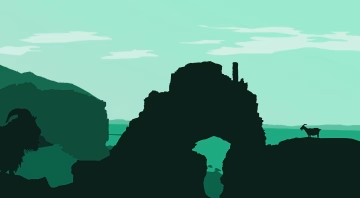
The Kildavie Settlement Archaeological Site is a significant historical landscape located in the North West Mull Community Woodland of Langamull, on the Isle of Mull. This intriguing site encompasses the tumbled-down, turf-covered remains of a post-medieval township. Archaeological investigations have identified at least sixteen structures, ranging from former domestic dwellings to potential sites of cottage industry, providing valuable evidence of a bygone era on the island.
The history of Kildavie stretches back further than its visible 17th and 18th-century remains. Early mapping evidence, such as Johan Blaeu’s Atlas of 1654 (based on Timothy Pont’s survey from 1575), depicts Kildavie. Excavations have provided dating evidence for inhabitation during the mid-1700s, and a fragment of an onion bottle dated 1713 has been recovered. Furthermore, test pits and nearby discoveries hint at much earlier occupation, with flint artefacts suggesting Mesolithic, Neolithic, Bronze Age, and Iron Age presence in the wider area, including a possible Bronze Age ring cairn.
The settlement was largely abandoned by the early 19th century, with many villagers reportedly leaving Scotland for North America during the period of the Highland Clearances, though the precise reasons for Kildavie’s abandonment are still being investigated. The site has been a focus for archaeological field schools and community outreach, with ongoing excavations by groups like HARP Archaeology, aimed at understanding the occupation period, building functions, and the wider cultural heritage of the area.
Rate us and Write a Review
December, 2025
Monday
August 26,2019
- Tuesday
- 9:00am - 10:00am
Awesome Job!
We have received your appointment and will send you a confirmation to your provided email upon approval.

